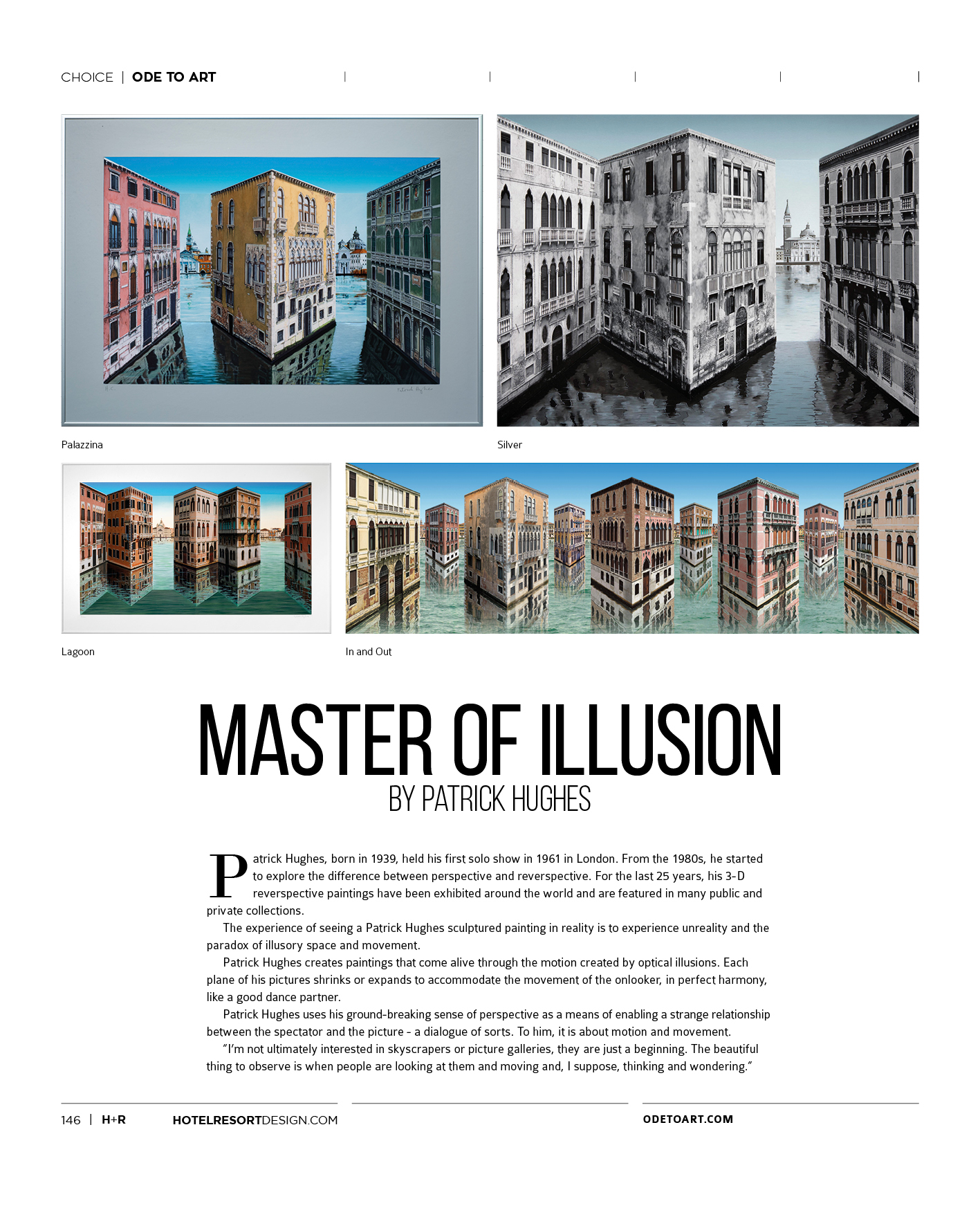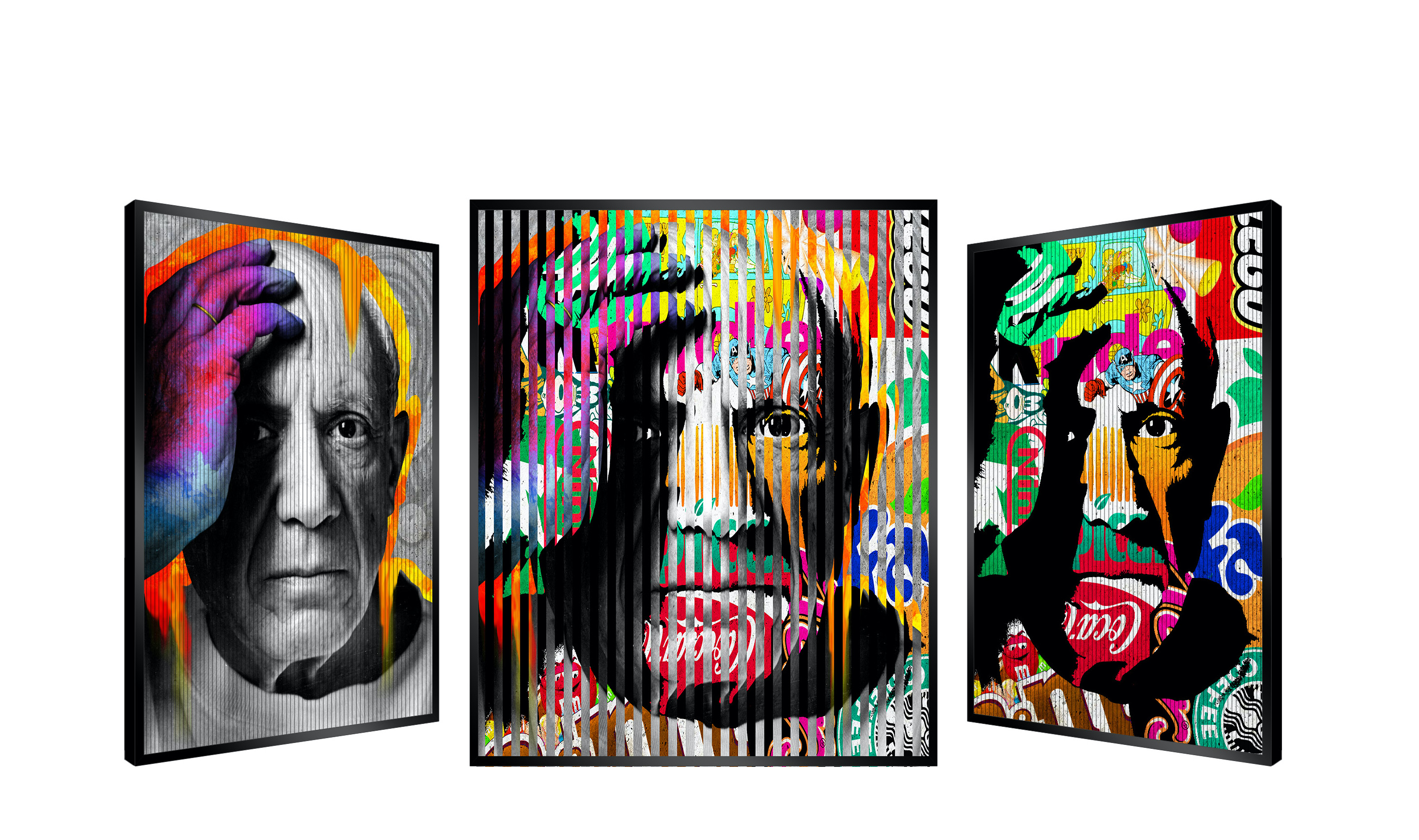
All About Artists
A Mind-Bending Tale of Two Patricks: The Mesmerising World of Optical & Kinetic Art
Patrick Hughes and Patrick Rubinstein are two contemporary artists creating captivating and humorous works that involve optics and kinetics, delighting viewers with the unique visual experiences they offer. Read further to discover the history of the two
By Sarah
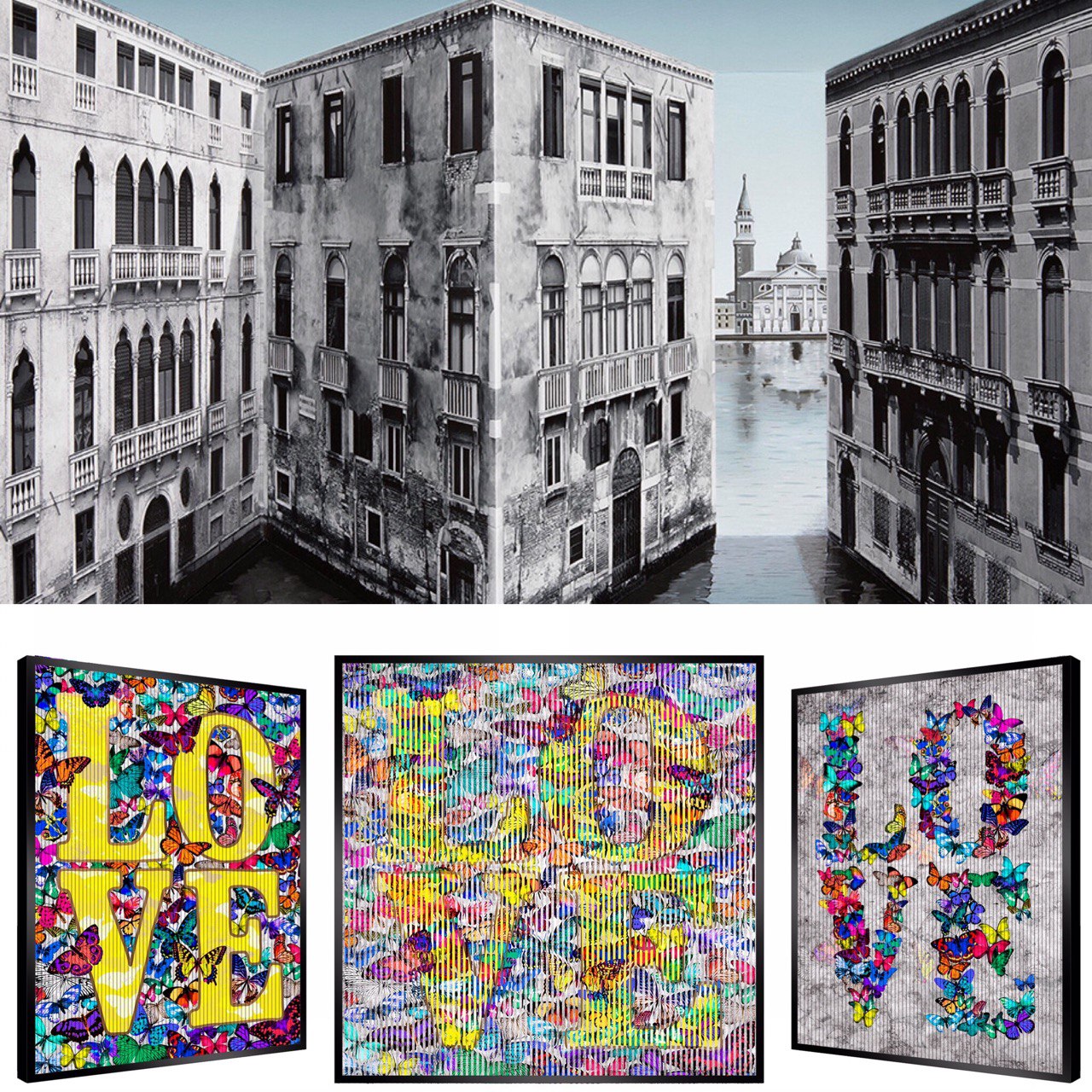
(Above) Silver by Patrick Hughes
(Below) Paillions En Folie by Patrick Rubinstein
Patrick Hughes and Patrick Rubinstein are two contemporary artists creating captivating and humorous works that involve optics and kinetics, delighting viewers with the unique visual experiences they offer. Read further to discover the history of the two movements- Optical Art and Kinetic Art- which have inspired the craft of these two virtuosos, as well as to learn more about the two ‘Patricks’ and their innovative artistic techniques.
Optical Art (or Op Art) and Kinetic Art were two artistic movements that arose in the 20th century and are by nature, significantly intertwined. Both explore the nature of perception and perspectives, creating a unique dialogue between the viewer and the work.
Optical Art
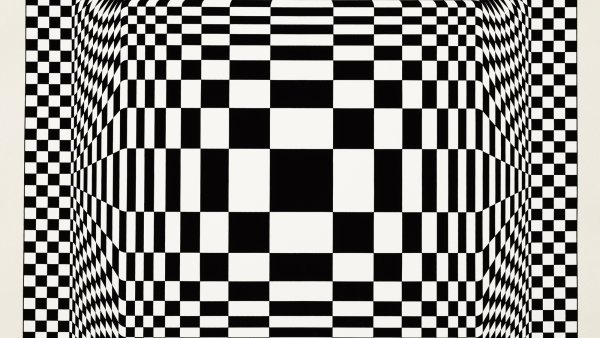 Nora-Dell by Victor Vasarely
Nora-Dell by Victor VasarelyOptical Art emerged as a movement in 1964, however, key Op artists such as Victor Vasarely had already begun to explore unusual perceptual effects in some designs from the 1930s. The movement is composed of illusion, and due to its precise, mathematically-based composition, often appears to the human eye to be moving. Op Art is interested in exploring a variety of optical phenomena. Subjects do not matter; everything is about perception and behavior of the eye.
The beginnings of the movement saw only black and white compositions in order to produce the greatest contrast since the extreme colour contrast causes the greatest confusion for the eye, which struggles to discern which elements of the composition is in the foreground and which in the background. Thus for viewers, it usually appears that the composition is actually a moving image – the foreground is constantly changing, causing an illusion in a viewer’s perception. Yet Op artists such as Julian Stanczak made colour the primary focus of their work, which was dominated by the same concerns of figure-ground movement, yet had the added element of contrasting colours that produced different effects on the eye.
Key Optical Artists
Victor Vasarely
Widely considered to be one of the founding artists of the movement, Victor Vasarely sought to produce an engaging approach to art that was deeply social. This was accomplished through geometric abstraction, in which Vasarely’s complex and colourfully engaging patterns convey a kinetic energy that is transposed to the viewer. The principle of internal geometry in the natural world is one of the motifs that Victor Vasarely pursued throughout his career. His illusions of depth, motion, and three-dimensionality laid the ground for the future Op-artists.
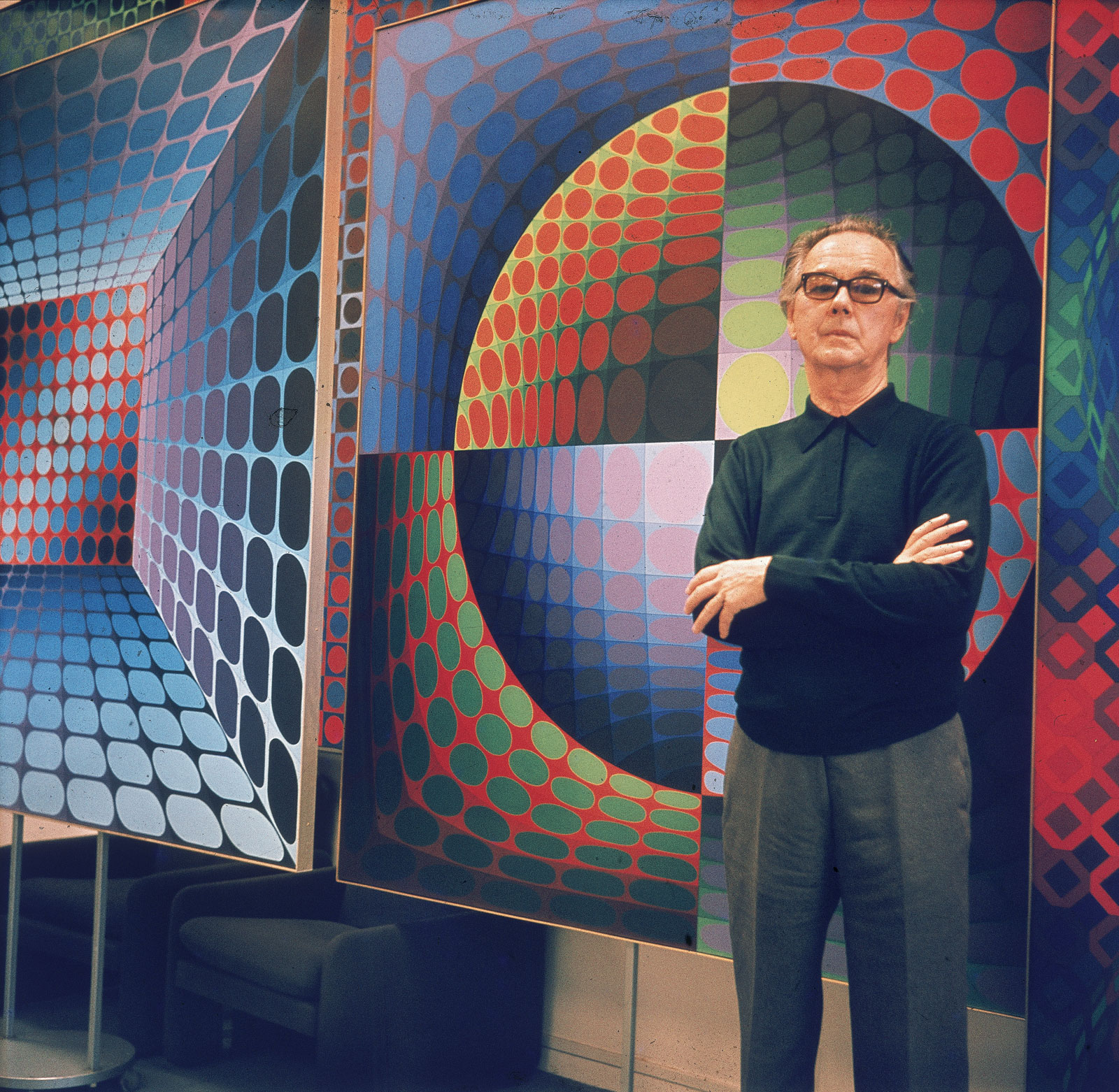
Victor Vasarely
Bridget Riley
Bridget Riley's geometric paintings implore the viewer to reflect on how it physically feels to look. Her paintings exploited optical illusions to make the two-dimensional surface of the painting seem to move, vibrate, and sparkle. Grounded in her own optical experiences and not color theories, math, or science, Riley experiments with structural units, such as squares, ovals, stripes, and curves in various configurations and colors to explore the physical and psychological responses of the eye. The artist sought to interrogate what and how we see and to provoke both uncertainty and clarity with her paintings.
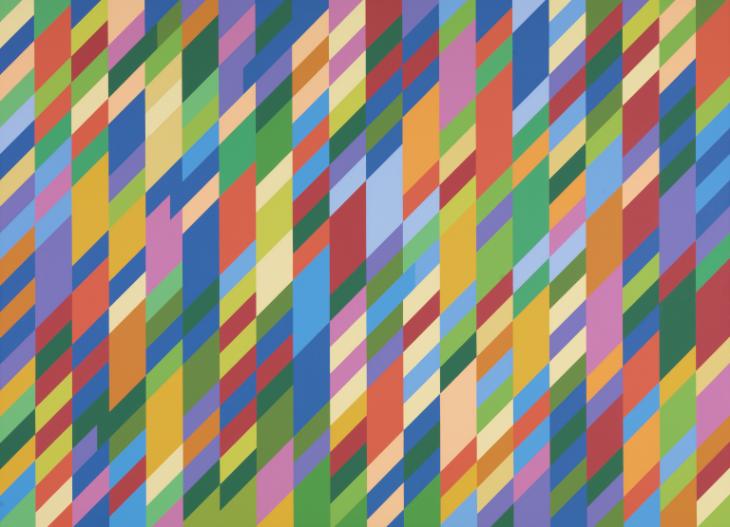 Nataraja by Bridget Riley
Nataraja by Bridget RileyKinetic Art
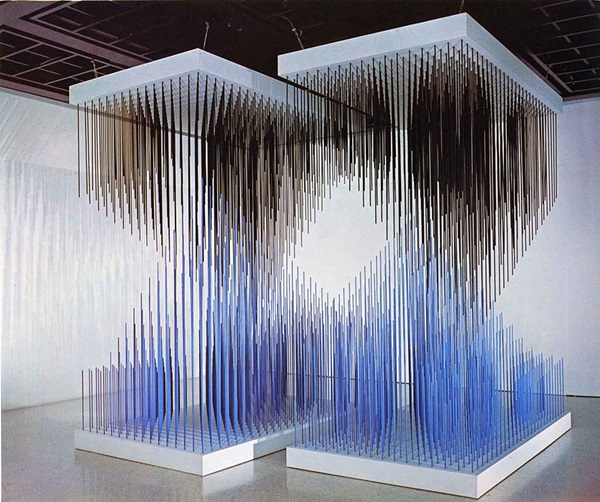 Penetrable BB Bleu by Jesus Rafael Soto
Penetrable BB Bleu by Jesus Rafael SotoKinetic Art refers to art of both real and apparent motion created between 1920 and 1970, although it was not recognised as a movement until the 1955 exhibition Le Mouvement (The Movement) at Galerie Denise Rene in Paris. Inherently static works of both two and three dimensions invited the spectator’s manipulation and movement to activate the object’s dynamic presence. Other artists intensified light and sound effects to dematerialize the object's structure and convert the static visual experience into a sensory experience of both time and space.
Kinetic art offered viewers some of the most quintessential expressions of Modern Art’s concern with presenting rather than representing living reality. Its ideas have been carried forth by subsequent generations of artists and continues to provide a rich source of creative concepts and technical effects up to the present day.
Key Kinetic Artists
Alexander Calder
Alexander Calder began developing his wire sculptures in the 1930s, which have been defined by critics as ‘drawing time in space’. He pursued his quest to make the abstract language move in the three-dimensional space by finding new ways to animate his sculptures: from letting them hang from the ceiling and allowing them free motion to actioning them with a small motor device.

Maripose by Alexander Calder
Calder's pioneering approach to sculpture, which he saw as kinetic abstraction, was integral to the evolution of modernism. He recognised that there is an intrinsic performance element in sculpture, to which the viewer becomes part of when they are forced to move around it or choose a certain angle to admire it. Calder then pushed these boundaries further, initially by giving movement to his pieces, and eventually by creating work that included sculpture, installation, musical instruments, and dance performance.
George Rickey
George Rickey was an American artist whose Kinetic Art sculptures poeticized the medium of steel in a transformative manner, by causing them to move and pivot in often counterintuitive ways, and created a vocabulary of simplified geometric forms set in carefully planned patterns of wind-driven movement. Rickey is best known for what he called his “useless machines.” Carefully crafted kinetic sculptures made of reflective stainless steel, these graceful, precisely calibrated sculptures move with the wind at unpredictable intervals, calling attention to the effects of wind, light, and the changing surroundings.
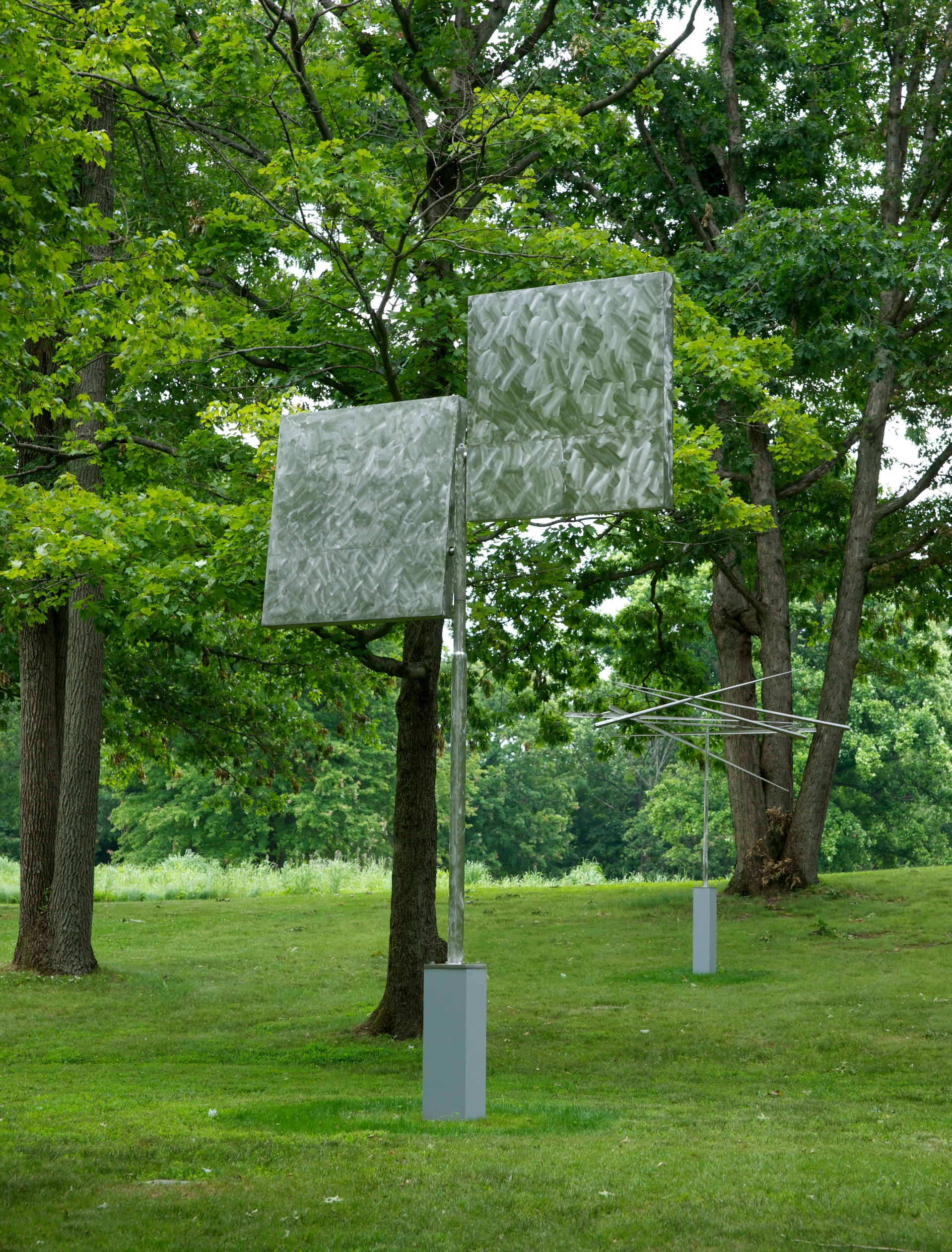 Five Open Squares Gyratory Gyratory by George Rickey
Five Open Squares Gyratory Gyratory by George RickeyPatrick Hughes and Patrick Rubinstein: A Tale of Two Patricks
Patrick Hughes
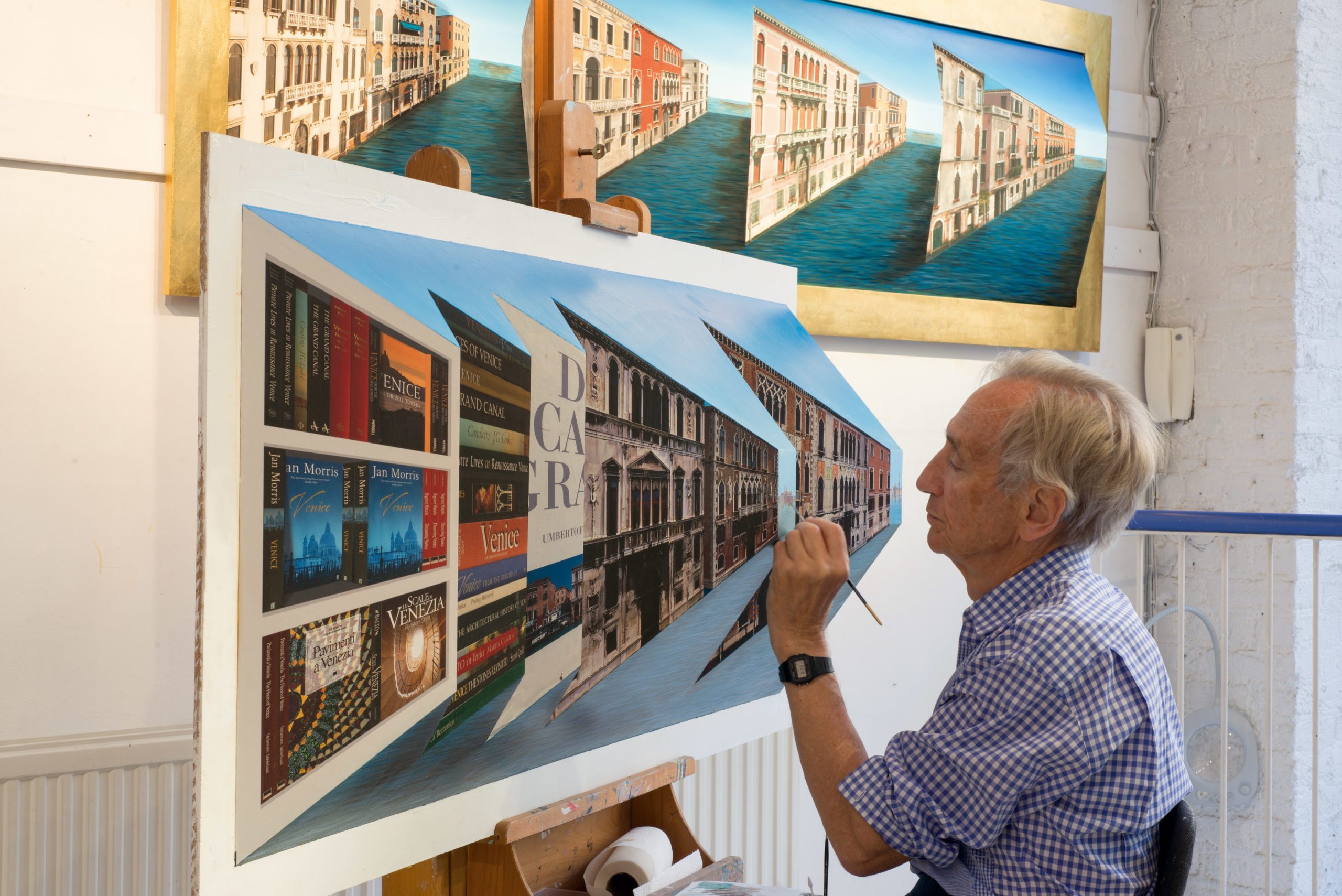
Patrick Hughes
British artist Patrick Hughes creates paintings that come alive through the motions created by optical illusions, a style he has developed and coined ‘reverspective’. Patrick painted his first reverspective in 1964 returning to the idea in the late 1980s. They are painted in oil on board constructed with two, three or four projecting ends. Hughes begins by constructing pyramid- or wedge-shaped blocks out of wood, which he combines into ridged panoramas. He then paints scenes into the blocks, depicting interior spaces—including museum galleries hung with iconic artworks—as well as landscapes and city views. The protruding parts of the works appear to recede, and the receding parts appear to protrude.
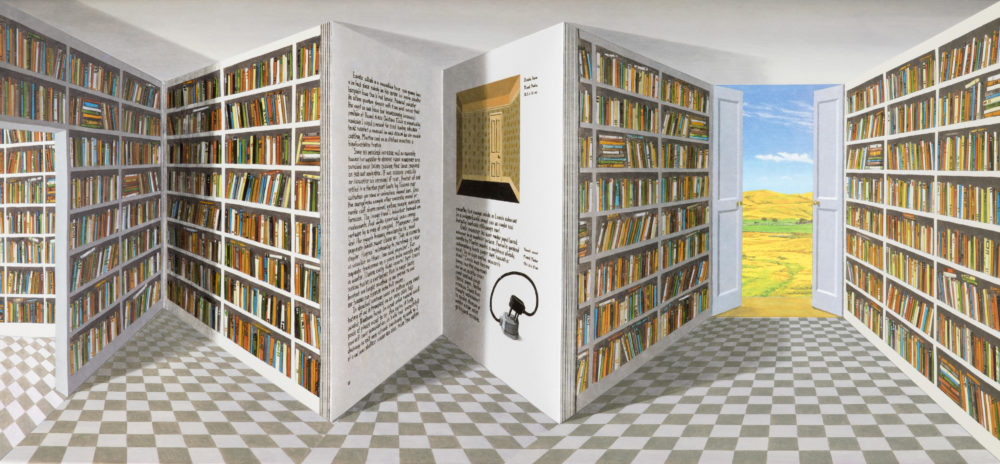
Bookish by Patrick Hughes
Forced and reverse perspective are used to create the illusion of movement. Each plane of his pictures shrinks or expands to accommodate the movement of the onlooker, in perfect harmony. As we walk towards the seemingly flat paintings they loom out at us, creating a disorientating, ‘moving’ experience. The preconceived assumptions of the eye and brain are challenged, inevitably raising important questions about our perception and the subconscious. There are no human figures in Hughes’ paintings, and instead, they are like empty stage sets ready for us to enter and explore, placing the viewer at the very centre of the work. The experience of seeing a Patrick Hughes sculptured painting, in reality, is to truly experience the paradox of illusory space and movement.
Patrick Rubinstein
 Patrick Rubinstein
Patrick RubinsteinFrench artist Patrick Rubinstein takes inspiration from both Optical and Kinetic art as well, maximising on the intricate sophistication of the eye with his captivating works. Through an innovative process, the artist creates his Pop-culture inspired pieces in three dimensions. This is done through his two methods, the double principle and the triple principle.
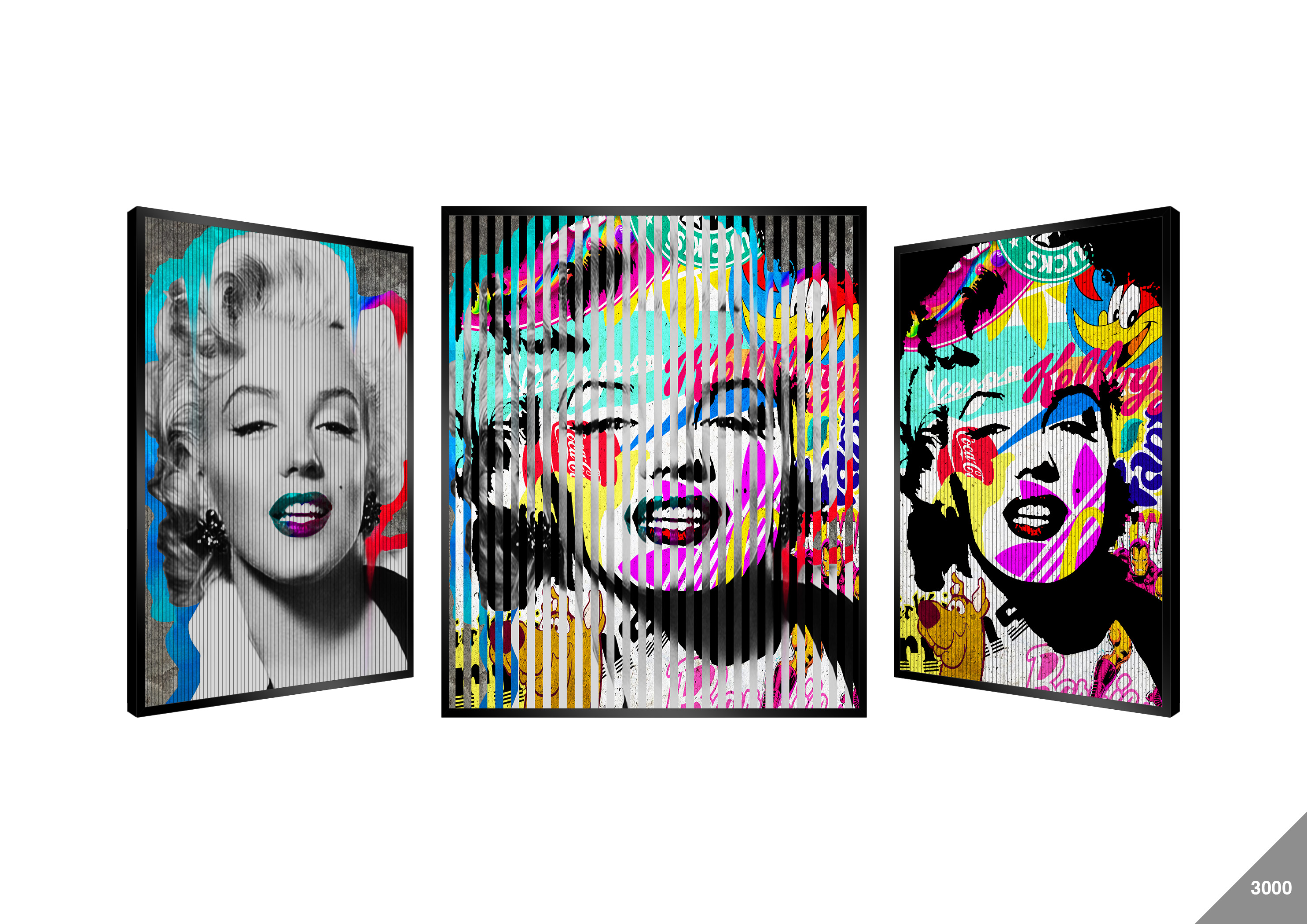 People and Brand (Marilyn Monroe) by Patrick Rubinstein
People and Brand (Marilyn Monroe) by Patrick RubinsteinThe Double Principle depicts the fusion of two images designed to blend into one. This newly merged image is applied to a medium in the accordion configuration. The application on this medium recreates, at a 45° angle, the two original images that can be seen from both sides. Several other images revealed through the interlacing of the two views become visible as the spectator moves around the artwork. The Triple Principle depicts three images, one central and two laterals. The side views are created by strips inserted perpendicular to the central image. Two distinct images are visible, from both sides at a 45° angle.
Rubinstein’s art has a striking effect when observed: the image, fixed at first, comes to life according to the movements of the viewer. We become the animator vis-à-vis the unprecedented dynamics of his work, that draw us into a captivating visual experience, and surprises us with every viewing.
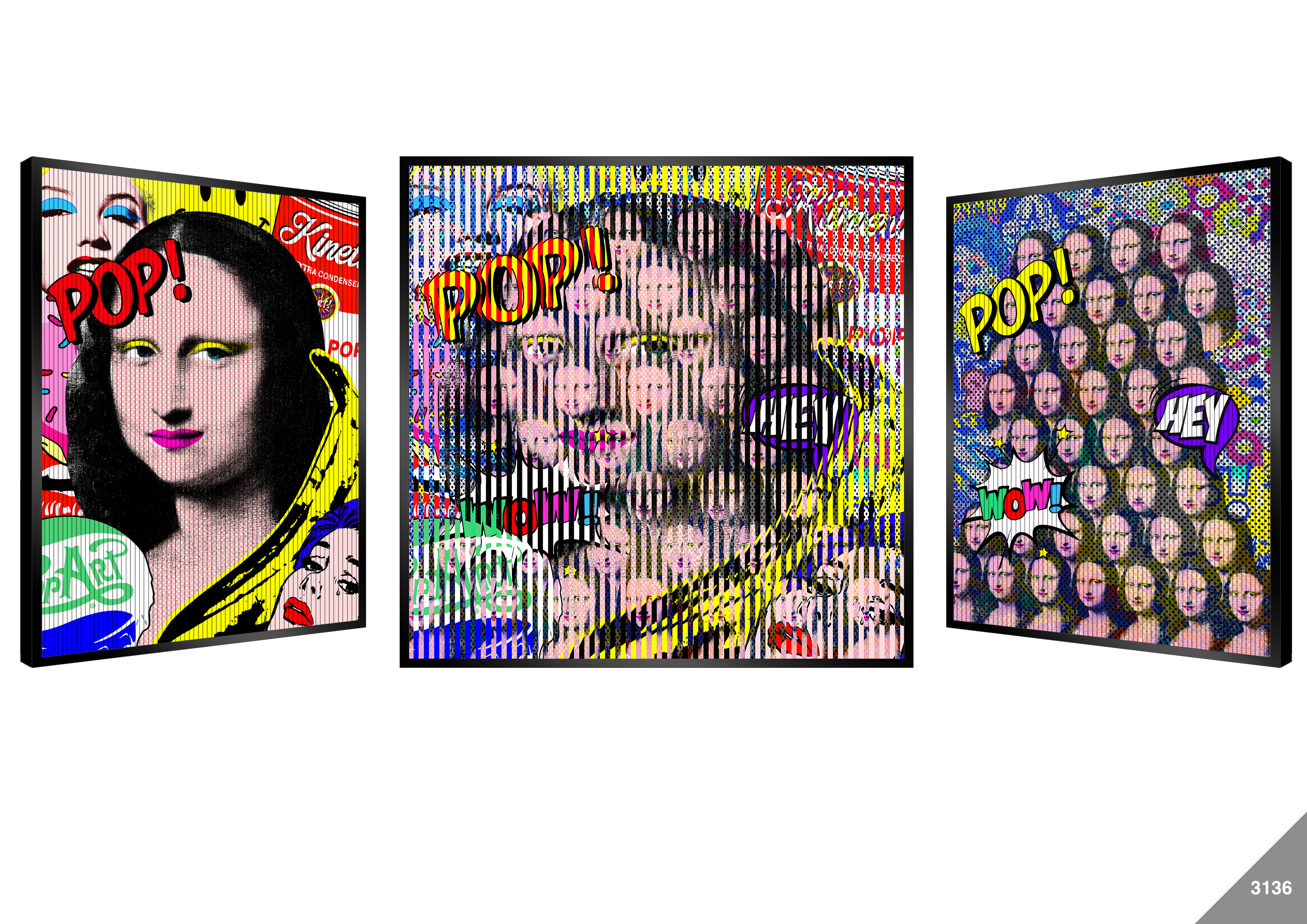 Pop Mona by Patrick Rubinstein
Pop Mona by Patrick RubinsteinIn a world which is increasingly shifting towards experiential forms of engagement (E.g. the awe-inspiring rise in global popularity of the teamLab art collective), the vision of these two artists are highly relevant, and their unique techniques equally captivating. Taking inspiration from the artistic movements that paved the way for them, they subsequently put their individual spin on their craft, creating works that reflect their individual artistic intentions and which are contemporary in nature. Through producing a dialogue between the viewer and the artwork, they bring it to life and create a dynamic experience that encourages viewer engagement and defies convention.


